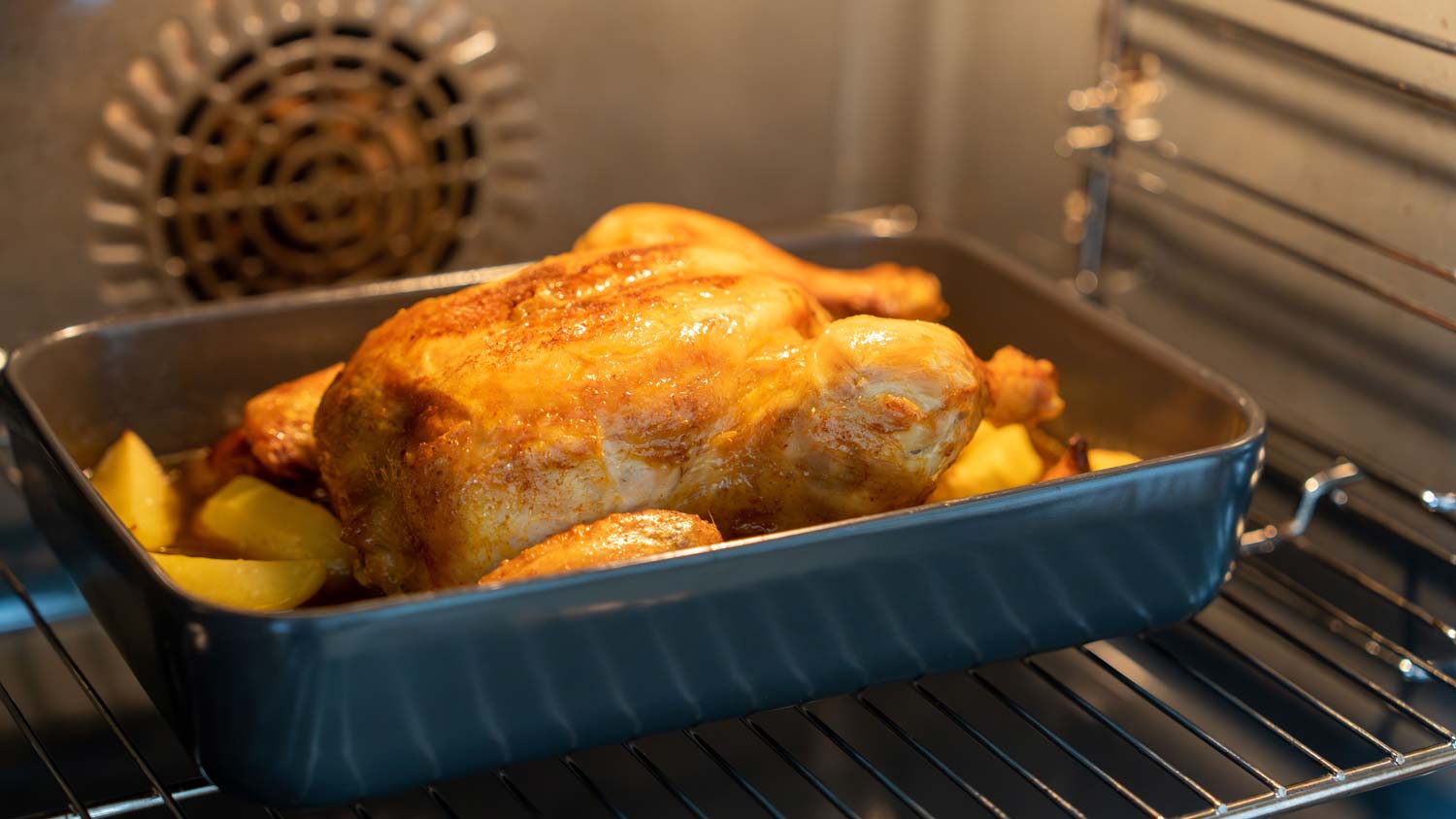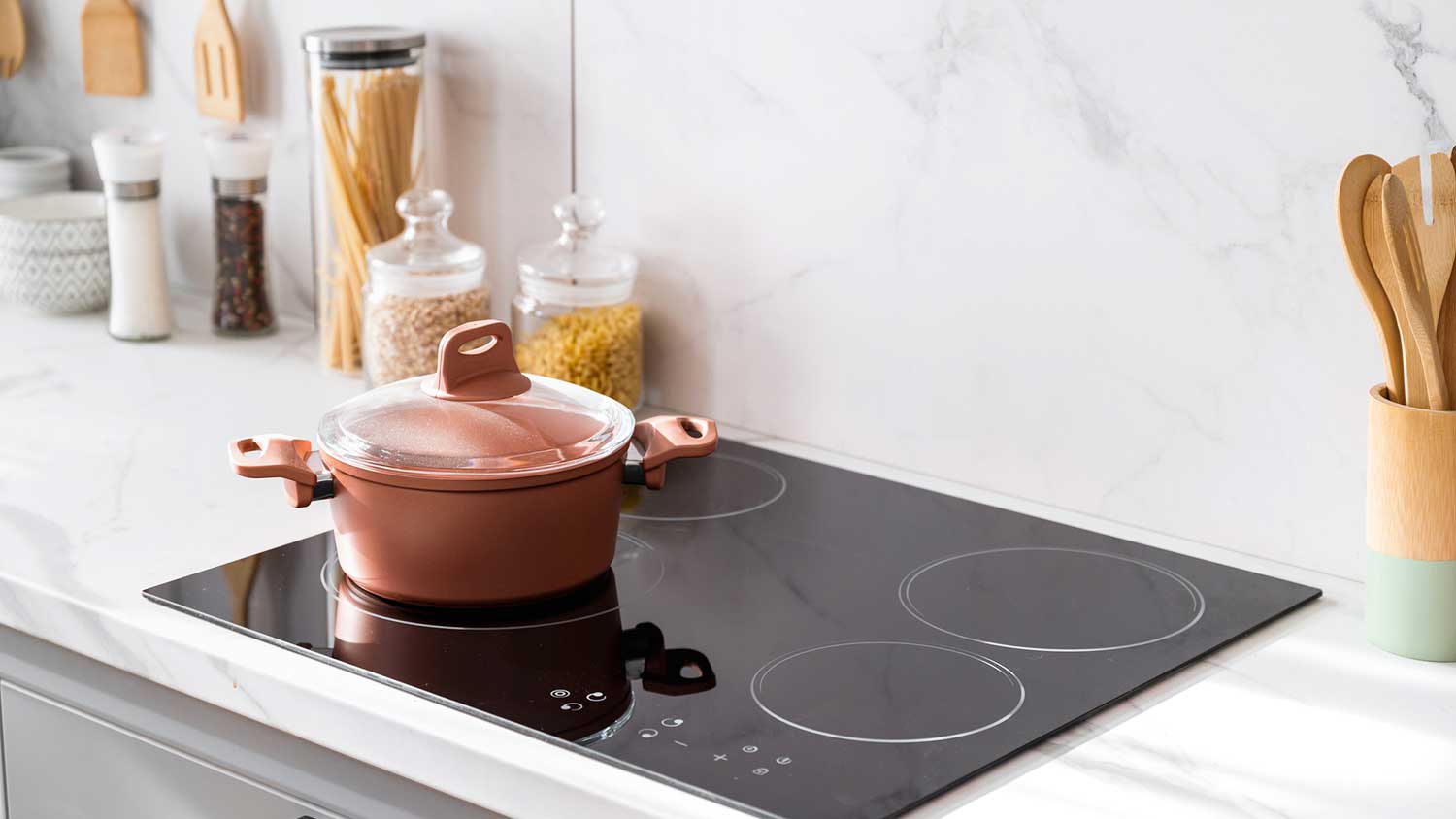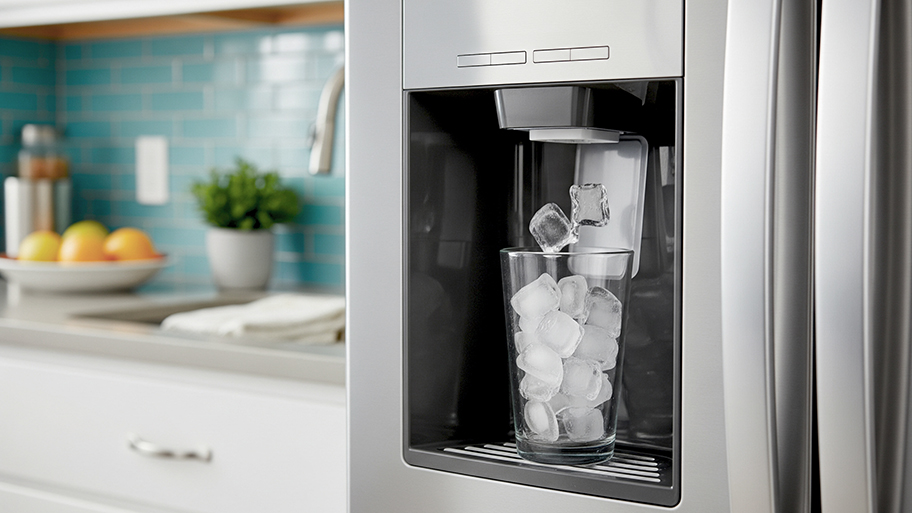
Depending on repair needs and machine age and type, the cost to replace a heating element in a dryer can vary. Learn the average repair costs.
Get the 411 on this heated topic


A convection oven uses a fan to circulate heat around the inside of the unit.
Compared to conventional ovens, convection ovens cook faster and are more energy-efficient.
Most recipes aren’t made for convection ovens and require adjusted temperatures and cooking times.
Convection ovens tend to cost more than $1,000.
When a meal goes wrong, most people are quick to blame themselves. But what if the problem isn’t you but your tools? You try your hand at baking a cake, and the bottom comes out burnt while the top is undercooked. Every master chef needs master tools, and that’s where a convection oven comes in. They’re ideal for getting quick, even bakes on tons of dishes. But what is a convection oven, and how does it work? Keep reading to find out.
A convection oven has a fan and exhaust system for circulating heat around the oven and venting the air out. This helps your food cook evenly and more quickly. Traditionally, ovens have hot spots near their heating elements. They’ll be hotter around the top, bottom, and the walls of the unit. Although it may seem weird at that moment, that’s why some recipes direct you on where to position the racks for a specific dish. Others might even tell you to rotate your dishes while in the oven. Most recipes—like the ones that require these extra details—are made for conventional ovens, but unlike conventional ovens, convection ovens help keep the temperature in the entire unit even.

On the outside, both ovens look the same. When you look deeper—or inside the unit—you can see and understand the key characteristics that mark the differences between convection and conventional ovens.
Convection ovens have an additional third element of the fan and exhaust system. Conventional fans only have two—at the top and bottom. While the bottom is the primary source of heat in the oven, the top heating element is for broiling or browning food.
The three elements of a convection oven evenly distribute heat around the inside of the unit. In a conventional oven, most of the heat comes from the bottom. This uneven heat distribution usually requires rotating your food to avoid uneven cooking, for example, one part of your food being burnt while the other is undercooked.
Because of its three heating elements and even heat distribution, food cooks faster in a convection oven, making it ideal for improving your home’s energy efficiency.
The uneven heat distribution of a conventional oven leaves you with less space you can occupy, especially if your recipe calls for specific placement for more even cooking. Convection ovens allow for multi-rack cooking. You can place multiple pans in the oven at once and not worry about undercooked or overcooked food.
Because of the added heating element, convection ovens often cost more than $1,000. On average, conventional ovens cost less than $800. The cost for both appliances varies, but installation costs are the same. You’ll likely pay between $105 to $125 to install a freestanding oven if you decide to hire a local appliance installation professional.

Let’s review the advantages and disadvantages of using a convection oven.
In general, a convection oven gives you one thing—more. Because of the way their heating distribution works, convection ovens are more energy-efficient and time-saving while allowing you to cook food more quickly and evenly.
The combination of three heating elements keeps the temperature in the oven consistent during the entire cooking process. This eliminates potential hot spots that cause the unique phenomenon of food that is somehow both undercooked and overdone. When the heat is consistent, your food cooks evenly and quickly, cutting down on how much time you spend in the kitchen. When you don’t have to keep your oven running to fix the uncooked parts of a dish, not only does your cooking become more energy efficient, but you’ll also get to save a few extra dollars on your energy bill.
The idea of “more” still applies when you consider the downsides of a convection oven. On average, they’re more expensive than conventional ovens. You’ll also find yourself spending more time maintaining your oven because convection oven fans require frequent cleanings to keep the fan working properly. And routine maintenance isn’t something to skip. Although most homeowners spend around $220 on repairs, the cost of oven repairs can reach up to $700.
Most recipes are made for conventional ovens, and if you’re transitioning to a convection oven, there may be some learning curve and frustration in the future. You’ll need to pay extra attention when recreating a recipe from a cookbook or even one you’ve made for years. Because of their quicker cook times, even at lower temperatures, convection ovens will force you to adjust recipes for every dish you make.
Lastly, it may not make or break your decision to buy a convection oven, but it’s worth noting that they’re louder than a traditional oven. While the fan will give you an even cook, it’ll make noise while it’s working.
You can use a convection oven for cooking most foods, like meats, vegetables, and desserts. Because of the way they cook food, it’s easier to achieve roasted meats and caramelized vegetables where the outside is crispy but the inside is moist. Desserts like cookies also benefit from convection ovens because of the even heat distribution and ability to use multiple racks.
Knowing when to use a convection oven also means knowing when not to use them. The fan can actually jostle some dishes, making them uneven or lopsided. You often run the risk of this happening with delicate pastries like soufflés and custards.
From average costs to expert advice, get all the answers you need to get your job done.

Depending on repair needs and machine age and type, the cost to replace a heating element in a dryer can vary. Learn the average repair costs.

Discover the average cooktop installation cost, key price factors, and tips to save. Learn what impacts your total cost and how to budget for your new cooktop.

Discover the average ice maker repair cost, key price factors, and tips to save. Learn how to budget for your ice maker repair and when to repair or replace.

Your gas oven might not heat up for various reasons, such as problems with the circuit breaker, igniter, or gas supply. You can troubleshoot to figure out why your gas oven won’t heat up, but you may need to reach out to a professional.

A frozen washing machine drain can interrupt your laundry routine. Learn what to do when your washing machine drain is frozen and how to prevent it.

If your microwave comes on when the door is opened, there are several potential causes to address. Find out the culprits with this guide.